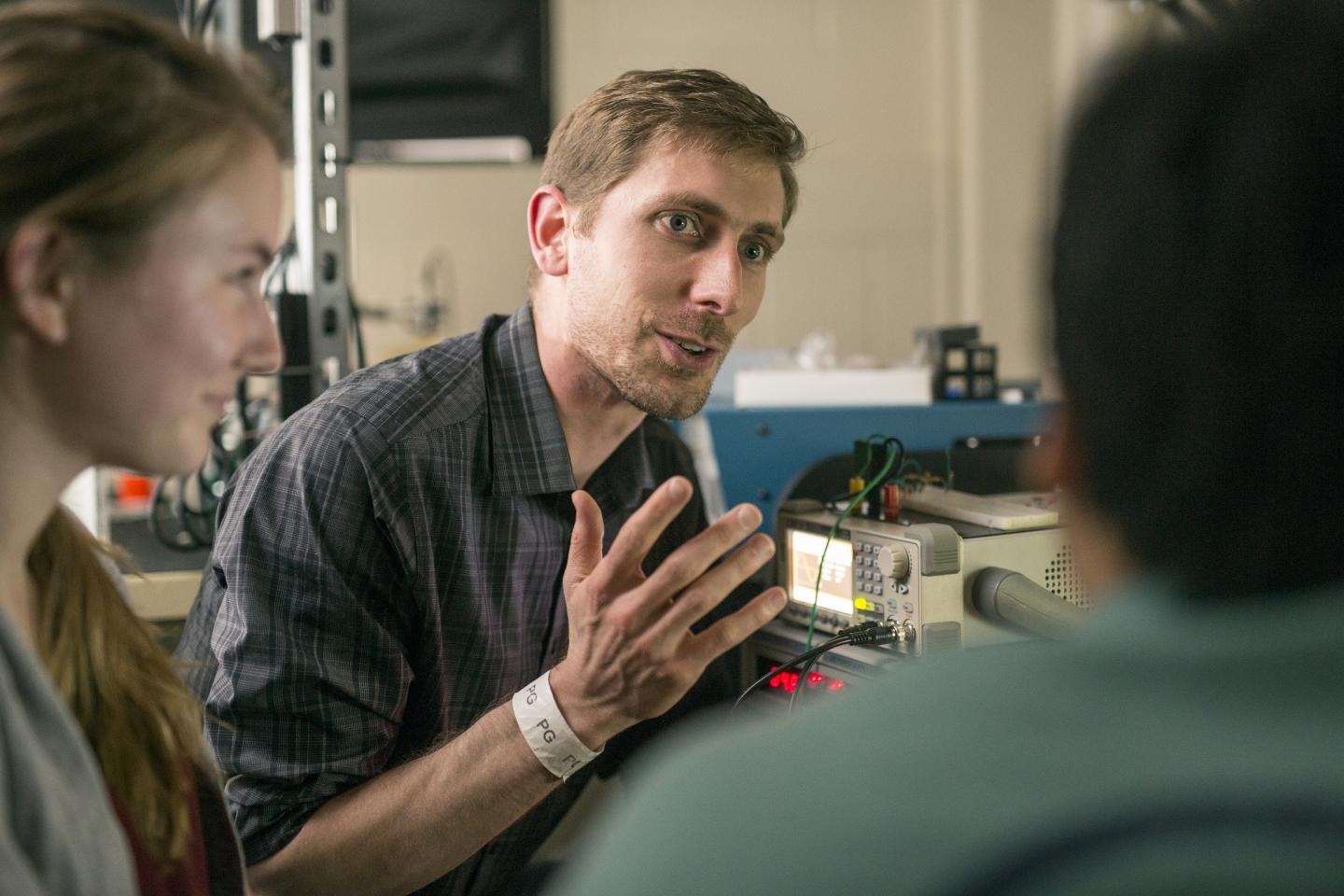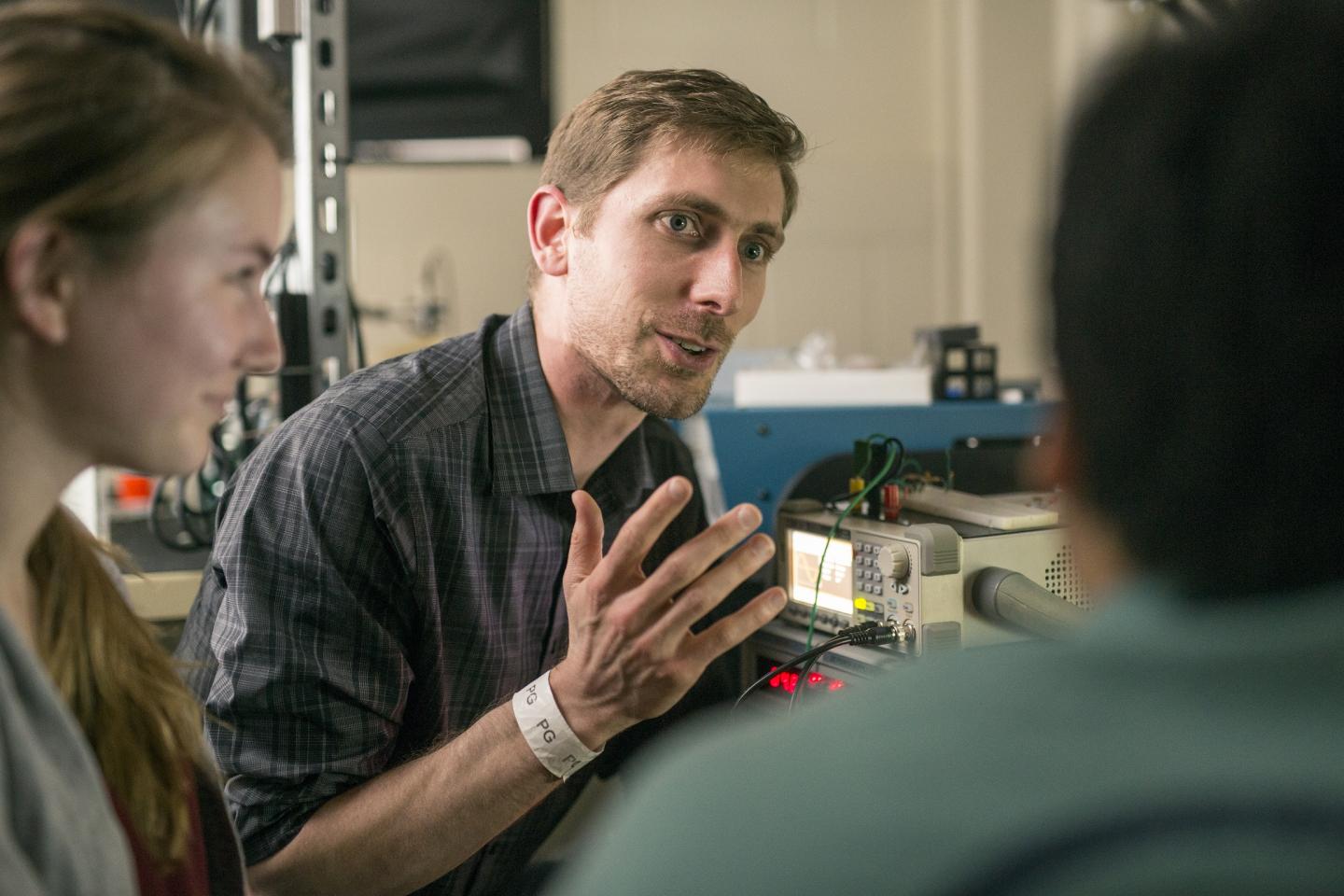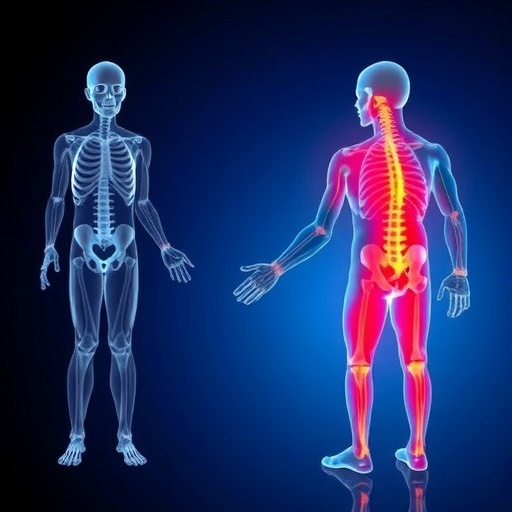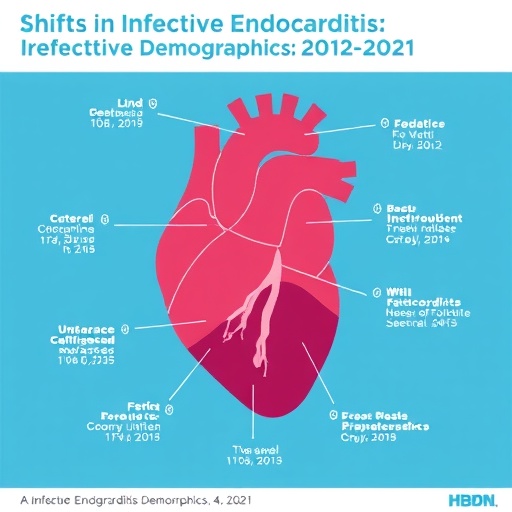
Credit: Daniel Dubois/Vanderbilt University
Ultrasound technology for the brain could mean real-time images during surgery, a better idea of which areas get stimulated by certain feelings or actions and, ultimately, an effective way for people to control software and robotics by thinking about it.
Medical doctors and scientists have spent decades hoping for such an advance, but it was impossible before now, said Brett Byram, assistant professor of biomedical engineering. Ultrasound beams bounced around inside the skull, so no useful imagery could make it out.
Byram plans to use machine learning that will gradually be able to account for distortion and deliver workable images. What's more, he wants to integrate electroencephalogram technology so doctors could see not only brain perfusion – how blood flow correlates to changes in thought – but also areas of stimulation related to movement and emotion.
"The goal is to create a brain-machine interface using an ultrasound helmet and EEG," Byram said. "A lot of the technology we're using now wasn't available when people were working on this 20 or 30 years ago. Deep neural networks and machine learning have become popular, and our group is the first to show how you can use those for ultrasound beamforming."
The applications, he said, are endless. At the basic level, it could allow for images as clear or moreso than those doctors are accustomed to seeing of the heart or womb.
Going forward, a person with limited movement due to ALS could think about wanting a glass of water, and a robotic arm could retrieve one because the helmet detected blood flow and EEG information that told it to. A student reading a paper may feel stress about a certain part that isn't properly sourced, and the computer would know to put a mark there for later editing.
Byram, whose funding for this is from a $550,000 National Science Foundation Faculty Early Career Development grant, said he's working with Leon Bellan, assistant professor of mechanical engineering and biomedical engineering, and Michael Miga, Harvie Branscomb Professor and professor of biomedical engineering, radiology and neurological surgery, to develop the helmet. He plans to invite medical center doctors to the team as their work progresses.
###
Media Contact
Heidi Nieland Hall
[email protected]
615-322-6614
@vanderbiltu
http://news.vanderbilt.edu/research/
Original Source
https://news.vanderbilt.edu/2018/05/08/ultrasound-helmet-would-make-live-images-brain-machine-interface-possible/





